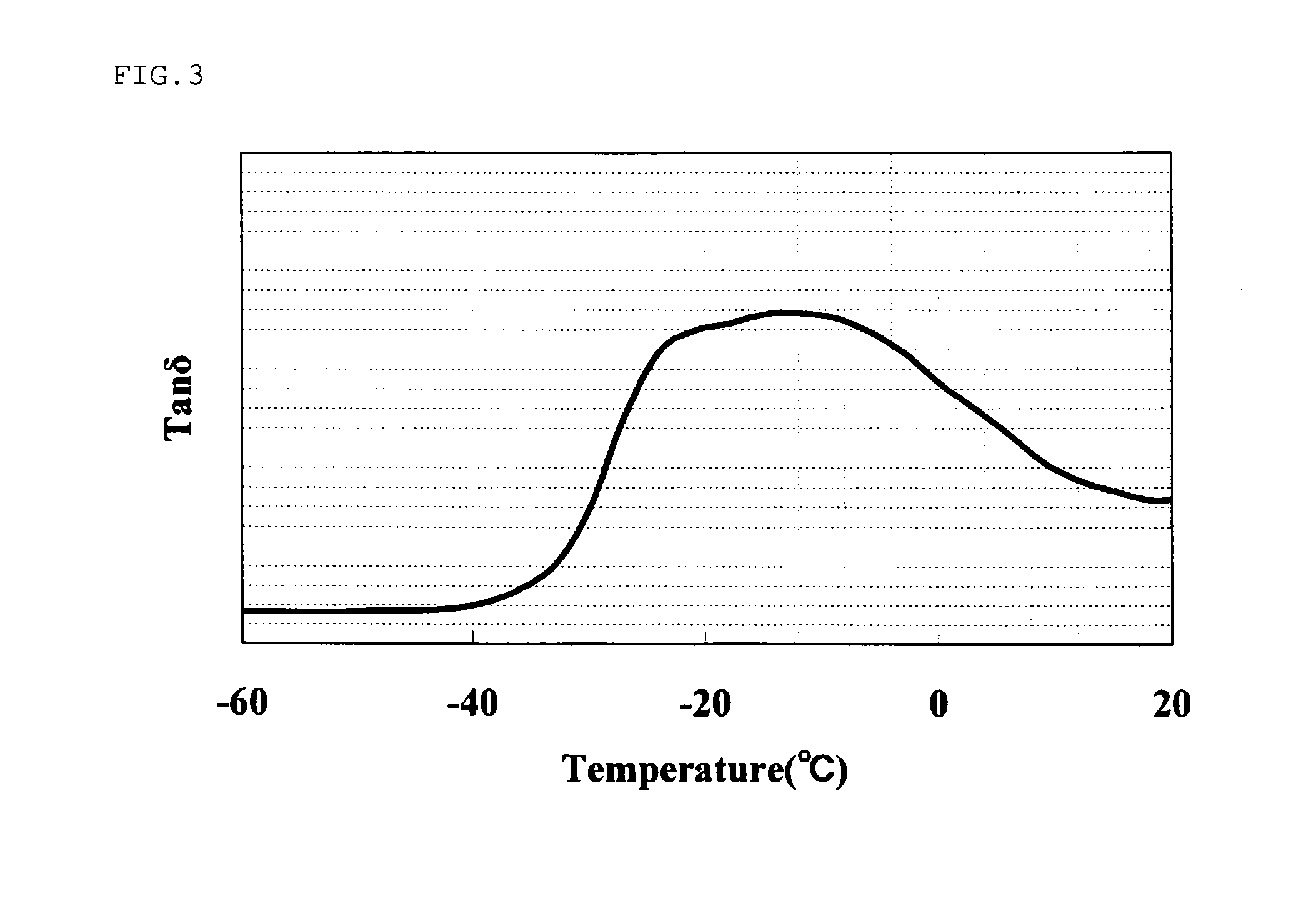Propylene resin sheet and heat processing packaging body using same
a technology of heat treatment packaging and propylene resin, which is applied in the direction of pharmaceutical packaging, synthetic resin layered products, packaging, etc., can solve the problems of poor heat resistance, appearance defects, and inability to function satisfactorily as iv bags, and achieve excellent low-temperature impact resistance, high heat resistance, and flexibility good balance
- Summary
- Abstract
- Description
- Claims
- Application Information
AI Technical Summary
Benefits of technology
Problems solved by technology
Method used
Image
Examples
examples
[0256]To more concretely and clearly explain the invention, the invention is illustrated below by contrasting examples of the invention with comparative examples, thereby demonstrating the sense and significance of the constitution of the invention. However, the invention is not limited by these examples. The physical property measurement methods, methods of characterization and resin materials used in the examples and comparative examples are described below.
1. Resin Property Measurement Methods
(1) MFR:
[0257]Propylene resin composition (A), propylene resin (C) and propylene resin (D) were measured in accordance with JIS K7210, Method A, Condition M; namely, at a test temperature of 230° C., a nominal load of 2.16 kg, and a die shape having a diameter of 2.095 mm and a length of 8.00 mm.
[0258]Ethylene-α-olefin copolymer (B) was measured in accordance with JIS K7210, Method A, Condition D; namely, at a test temperature of 190° C., a nominal load of 2.16 kg, and a die shape having a d...
production examples b-2
and B-3
[0297]Aside from changing the amount of 1-hexene included during polymerization and the polymerization temperature as shown in Table 4, catalyst preparation and polymerization were carried out by the same method as in Production Example PE (B-1).
[0298]Following reaction completion, various analyses were carried out on the resulting polymer.
[0299]The commercial products used were as follows.
(B-4): The commercial product TAFMER A-1085S available under this trade name from Mitsui Chemicals (an ethylene-α-olefin copolymer prepared with a metallocene catalyst)
(B-5): The commercial product TAFMER A-4085S available under this trade name from Mitsui Chemicals (an ethylene-α-olefin copolymer prepared with a metallocene catalyst)
(B-6): The commercial product ENGAGE EG 8003 available under this trade name from Dow Chemical (an ethylene-α-olefin copolymer prepared with a metallocene catalyst)
(B-7): The commercial product KERNEL KF 283 available under this trade name from Japan Polyethyle...
production example c-3
(i) Production of Solid Component Catalyst
[0303]A nitrogen-flushed 50 L reactor equipped with a stirrer was charged with 20 liters of dehydrated and deoxygenated n-heptane, then 4 moles of magnesium chloride and 8 moles of tetrabutoxytitanium were added and the reactor contents were reacted at 95° C. for 2 hours. The temperature was subsequently lowered to 40° C., 480 mL of methylhydropolysiloxane (20 centistokes) was added, and the contents were again reacted for 3 hours, following which the reaction mixture was removed and the solid component that had formed was washed with n-heptane.
[0304]Next, 15 liters of dehydrated and deoxygenated n-heptane was charged into the same type of reactor with stirrer as described above, following which the solid components were added in an amount equivalent to 3 moles of magnesium atoms. A mixture of 8 moles of silicon tetrachloride added to 25 mL of n-heptane was then introduced at 30° C. over a period of 30 minutes, the temperature was raised to ...
PUM
| Property | Measurement | Unit |
|---|---|---|
| melting peak temperature | aaaaa | aaaaa |
| melt flow rate | aaaaa | aaaaa |
| wt % | aaaaa | aaaaa |
Abstract
Description
Claims
Application Information
 Login to View More
Login to View More - R&D
- Intellectual Property
- Life Sciences
- Materials
- Tech Scout
- Unparalleled Data Quality
- Higher Quality Content
- 60% Fewer Hallucinations
Browse by: Latest US Patents, China's latest patents, Technical Efficacy Thesaurus, Application Domain, Technology Topic, Popular Technical Reports.
© 2025 PatSnap. All rights reserved.Legal|Privacy policy|Modern Slavery Act Transparency Statement|Sitemap|About US| Contact US: help@patsnap.com


